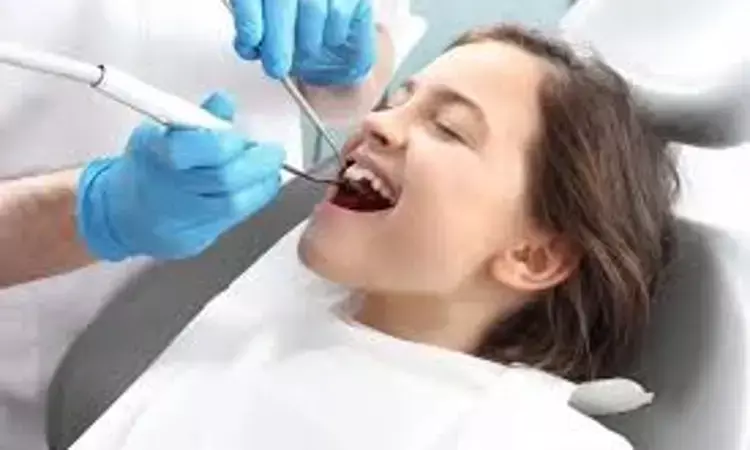- Home
- Medical news & Guidelines
- Anesthesiology
- Cardiology and CTVS
- Critical Care
- Dentistry
- Dermatology
- Diabetes and Endocrinology
- ENT
- Gastroenterology
- Medicine
- Nephrology
- Neurology
- Obstretics-Gynaecology
- Oncology
- Ophthalmology
- Orthopaedics
- Pediatrics-Neonatology
- Psychiatry
- Pulmonology
- Radiology
- Surgery
- Urology
- Laboratory Medicine
- Diet
- Nursing
- Paramedical
- Physiotherapy
- Health news
- Fact Check
- Bone Health Fact Check
- Brain Health Fact Check
- Cancer Related Fact Check
- Child Care Fact Check
- Dental and oral health fact check
- Diabetes and metabolic health fact check
- Diet and Nutrition Fact Check
- Eye and ENT Care Fact Check
- Fitness fact check
- Gut health fact check
- Heart health fact check
- Kidney health fact check
- Medical education fact check
- Men's health fact check
- Respiratory fact check
- Skin and hair care fact check
- Vaccine and Immunization fact check
- Women's health fact check
- AYUSH
- State News
- Andaman and Nicobar Islands
- Andhra Pradesh
- Arunachal Pradesh
- Assam
- Bihar
- Chandigarh
- Chattisgarh
- Dadra and Nagar Haveli
- Daman and Diu
- Delhi
- Goa
- Gujarat
- Haryana
- Himachal Pradesh
- Jammu & Kashmir
- Jharkhand
- Karnataka
- Kerala
- Ladakh
- Lakshadweep
- Madhya Pradesh
- Maharashtra
- Manipur
- Meghalaya
- Mizoram
- Nagaland
- Odisha
- Puducherry
- Punjab
- Rajasthan
- Sikkim
- Tamil Nadu
- Telangana
- Tripura
- Uttar Pradesh
- Uttrakhand
- West Bengal
- Medical Education
- Industry
ICDAS II criteria has edge over WHO criteria for Caries Diagnosis in Children

Recent research revealed that the International Caries Detection and Assessment System (ICDAS II) is a better and more valuable tool than WHO criteria for diagnosing early/non-cavitated carious lesions. The study was published in the International Journal of Pediatric Dentistry.
The most commonly used dental caries index in epidemiological studies is the decayed-missing-filled teeth (DMFT/dmft) index suggested by the World Health Organisation (WHO), which indicates the prevalence of caries based on the occurrence of cavitation. Early detection of non-cavitated carious lesions enables the administration of preventive interventions which eventually reduces the morbidity and financial burden of restorative or rehabilitative therapy. Both the cavitated and non-cavitated carious lesions are included in the International Caries Detection and Assessment System (ICDAS II) with satisfactory reliability. As there is not much literature on the difference between the two tools, Amita Raiet alfrom People's Dental College and Hospital, Kathmandu, Nepal conducted a cross-sectional study to compare dental caries prevalence based on ICDAS II and WHO criteria.
Nearly 362 children visiting a local hospital for dental checkups were studied for dental caries prevalence based on the ICDAS II and WHO criteria.
Results:
- Among the study population, 290 (90.34%) and 169 (68.42%) children had dental caries in primary and permanent teeth according to the ICDAS II criteria.
- According to WHO criteria, 267 (83.18%) and 107 (43.32%) had dental caries in primary and permanent teeth, respectively.
- There was a significantly higher prevalence of dental caries (p<0.001) according to ICDAS II criteria when compared to the caries prevalence based on WHO criteria in both dentitions.
Thus, early/non-cavitated carious lesions could be easily identified by the ICDAS II tool rather than the WHO tool. This also helps in implementing early prevention strategies.
Further reading: Rai A et al.Comparative assessment of dental caries based on ICDAS and WHO criteria.https://doi.org/10.1111/ipd.13099
BDS, MDS
Dr.Niharika Harsha B (BDS,MDS) completed her BDS from Govt Dental College, Hyderabad and MDS from Dr.NTR University of health sciences(Now Kaloji Rao University). She has 4 years of private dental practice and worked for 2 years as Consultant Oral Radiologist at a Dental Imaging Centre in Hyderabad. She worked as Research Assistant and scientific writer in the development of Oral Anti cancer screening device with her seniors. She has a deep intriguing wish in writing highly engaging, captivating and informative medical content for a wider audience. She can be contacted at editorial@medicaldialogues.in.
Dr Kamal Kant Kohli-MBBS, DTCD- a chest specialist with more than 30 years of practice and a flair for writing clinical articles, Dr Kamal Kant Kohli joined Medical Dialogues as a Chief Editor of Medical News. Besides writing articles, as an editor, he proofreads and verifies all the medical content published on Medical Dialogues including those coming from journals, studies,medical conferences,guidelines etc. Email: drkohli@medicaldialogues.in. Contact no. 011-43720751



